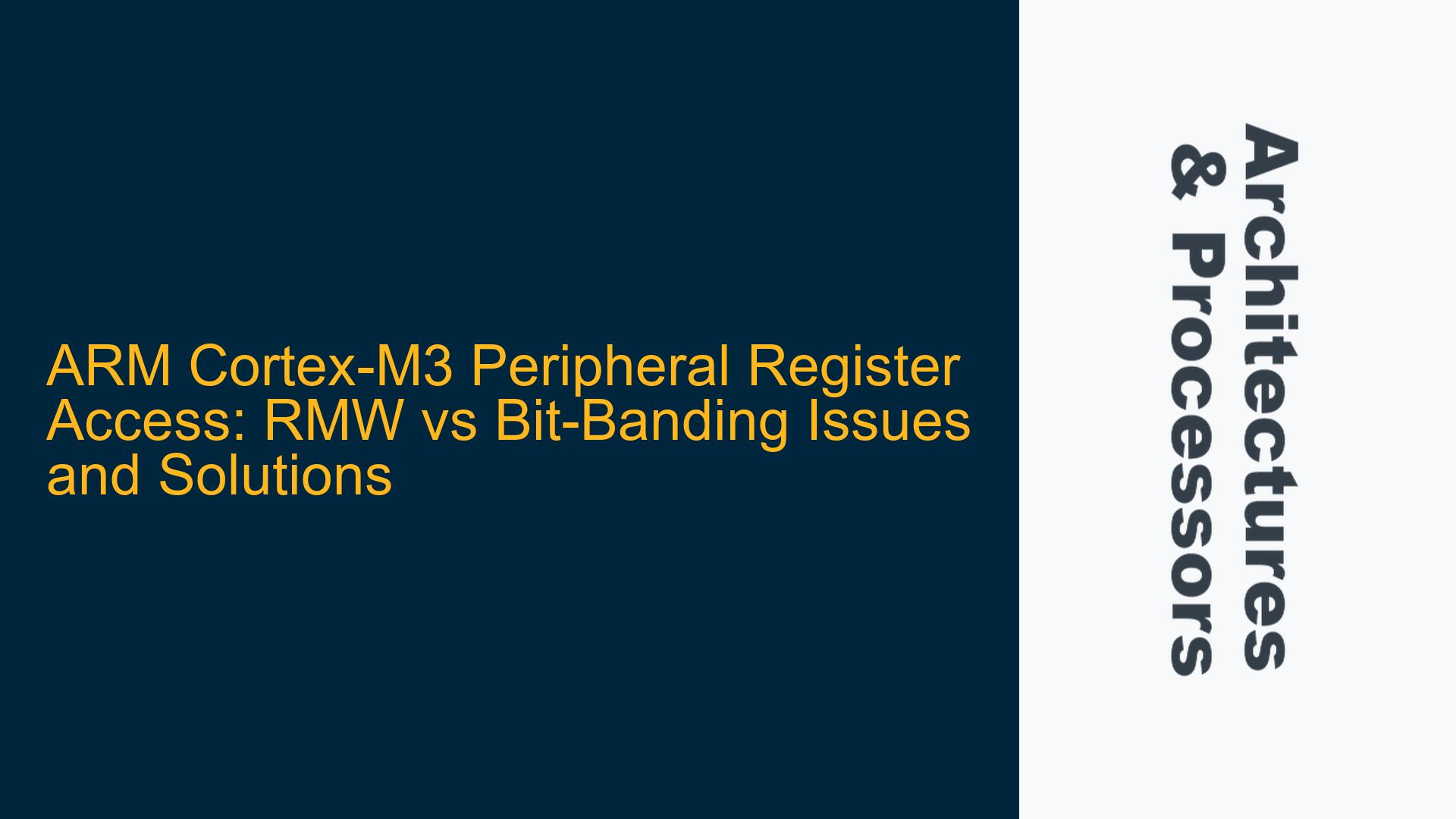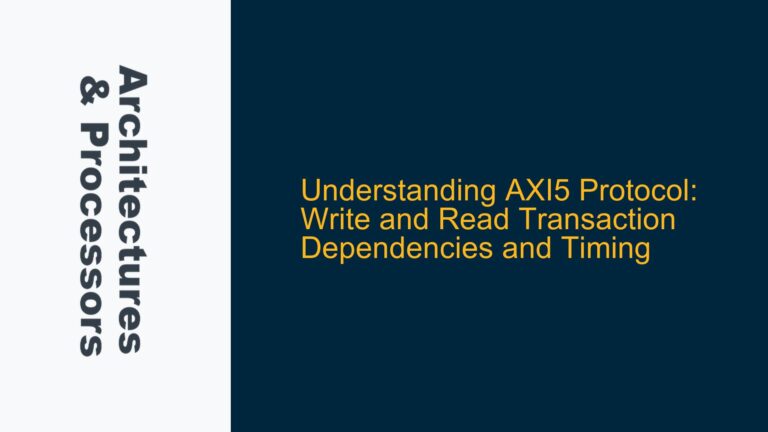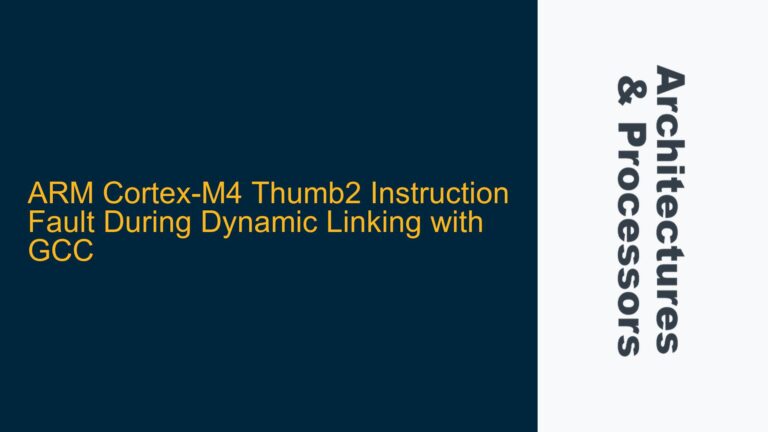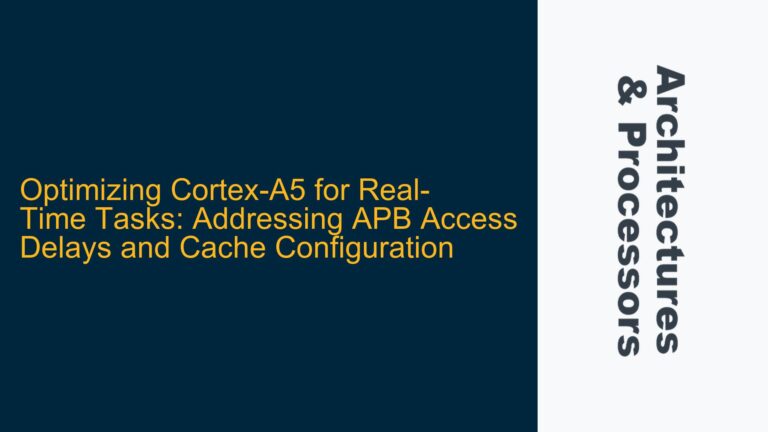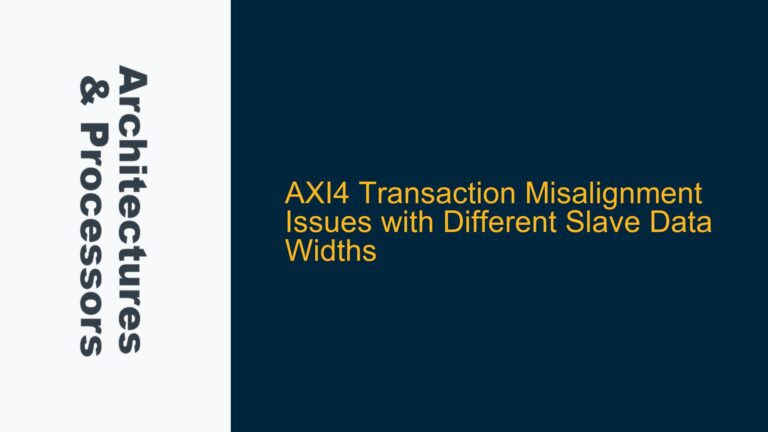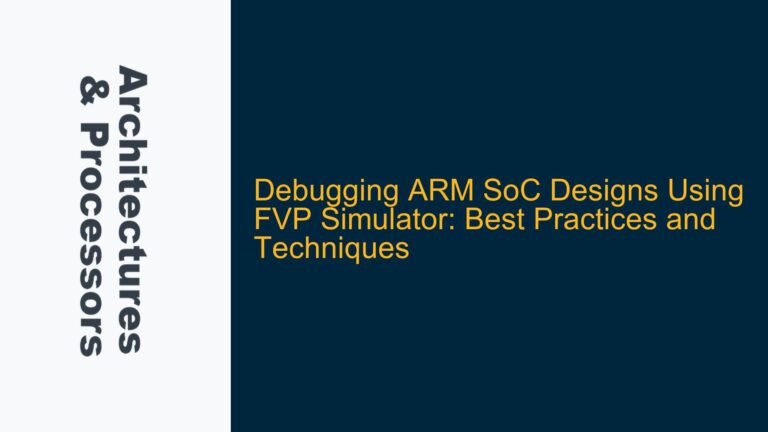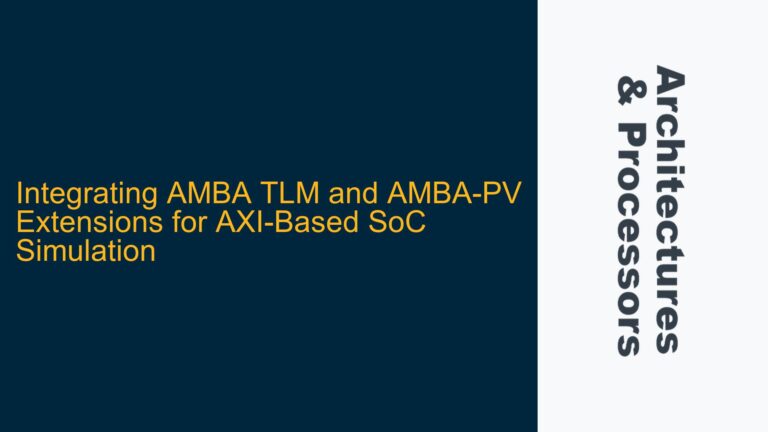ARM Cortex-M3 Peripheral Register Access Failures During Interrupt Handling
When working with ARM Cortex-M3 microcontrollers, developers often encounter issues related to peripheral register access, particularly when using Read-Modify-Write (RMW) operations in interrupt-driven contexts. The problem arises when attempting to modify specific bits in peripheral registers using standard C operations such as |= (bitwise OR) and &= (bitwise AND). These operations, while seemingly straightforward, can fail to achieve the desired outcome due to the underlying hardware architecture and memory access semantics.
In the case of the Cortex-M3, the failure is often observed when clearing an interrupt flag and subsequently enabling an interrupt. For example, consider a scenario where a developer attempts to clear an interrupt flag (DRQ) and then enable an interrupt (DRQIE) using RMW operations. The sequence might look like this:
*EPnS0 &= ~MASK_EPS_DRQ; // Clear interrupt flag
*EPnS0 |= MASK_EPS_DRQIE; // Enable interrupt
Despite the simplicity of the code, the interrupt flag may not be cleared as expected, leading to incorrect program behavior. This issue is particularly perplexing because the same code might work flawlessly on other architectures, such as 16-bit CISC microcontrollers. The root cause lies in the Cortex-M3’s memory access model, the behavior of peripheral registers, and the interaction between the processor and the memory system.
Memory Access Ordering and Write-1-to-Clear (W1C) Register Behavior
The primary cause of the issue is the combination of memory access ordering and the specific behavior of peripheral registers, particularly those with Write-1-to-Clear (W1C) bits. In the Cortex-M3, peripheral registers are often mapped to memory regions with specific attributes, such as being marked as "device" or "strongly ordered." These attributes influence how the processor handles memory accesses, including the order in which reads and writes are performed.
When using RMW operations, the processor performs a read from the peripheral register, modifies the value in a register, and then writes the modified value back to the peripheral register. However, if the peripheral register contains W1C bits, this sequence can lead to unintended side effects. For example, if a W1C bit is set to 1 in the register, writing it back as 1 during the RMW operation will clear the bit, which may not be the intended behavior.
Additionally, the Cortex-M3’s memory system does not guarantee the order of memory accesses unless explicit synchronization instructions are used. This lack of ordering can cause the write to clear the interrupt flag (DRQ) to be delayed or reordered with respect to the write to enable the interrupt (DRQIE). As a result, the interrupt flag may not be cleared before the interrupt is enabled, leading to unexpected behavior.
The use of bit-banding, a feature available in the Cortex-M3, can mitigate this issue. Bit-banding allows individual bits in memory to be accessed directly, eliminating the need for RMW operations. When using bit-banding, each bit in a peripheral register is mapped to a unique address in the bit-band alias region. Writing to this address directly sets or clears the corresponding bit in the peripheral register without affecting other bits. This approach ensures atomicity and avoids the pitfalls of RMW operations.
Implementing Data Synchronization Barriers and Bit-Banding for Reliable Register Access
To address the issues with RMW operations and ensure reliable access to peripheral registers, developers can implement a combination of data synchronization barriers and bit-banding. The Data Synchronization Barrier (DSB) instruction is particularly useful in this context. The DSB instruction ensures that all memory accesses before the barrier are completed before any subsequent instructions are executed. This guarantees that the write to clear the interrupt flag is completed before the write to enable the interrupt.
For example, the following code sequence uses a DSB instruction to ensure proper ordering:
*EPnS0 &= ~MASK_EPS_DRQ; // Clear interrupt flag
__DSB(); // Ensure the write completes
*EPnS0 |= MASK_EPS_DRQIE; // Enable interrupt
The __DSB() intrinsic inserts a DSB instruction into the code, ensuring that the write to clear the interrupt flag is completed before the write to enable the interrupt. This approach resolves the issue of delayed or reordered memory accesses.
Alternatively, developers can use bit-banding to directly access the bits in the peripheral register. The following code demonstrates how to use bit-banding to clear the interrupt flag and enable the interrupt:
bFM3_USB0_EP1S_DRQ = 0; // Clear interrupt flag using bit-banding
bFM3_USB0_EP1S_DRQIE = 1; // Enable interrupt using bit-banding
In this example, bFM3_USB0_EP1S_DRQ and bFM3_USB0_EP1S_DRQIE are bit-band aliases for the corresponding bits in the peripheral register. Writing to these aliases directly sets or clears the bits without affecting other bits in the register. This approach eliminates the need for RMW operations and ensures atomicity.
Memory Protection Unit (MPU) Configuration for Peripheral Regions
Proper configuration of the Memory Protection Unit (MPU) is also critical for reliable peripheral register access. The MPU allows developers to define memory regions with specific attributes, such as access permissions, cacheability, and shareability. For peripheral regions, the MPU should be configured to mark the region as "device" memory, which ensures that memory accesses are strongly ordered and not cached.
The following code demonstrates how to configure the MPU for a peripheral region:
MPU->RNR = 3; // Select region 3
MPU->RBAR = ARM_MPU_RBAR(3, 0x40000000); // Set base address to 0x40000000
MPU->RASR = ARM_MPU_RASR(1, ARM_MPU_AP_FULL, 0, 1, 0, 1, 0, ARM_MPU_REGION_SIZE_64MB);
In this example, the MPU is configured to define region 3 as a 64MB peripheral region starting at address 0x40000000. The region is marked as non-executable (DisableExec: 1), fully accessible (AccessPermission: 3), shareable (IsShareable: 1), non-cacheable (IsCacheable: 0), and bufferable (IsBufferable: 1). This configuration ensures that memory accesses to the peripheral region are handled correctly by the processor.
Summary of Best Practices
To ensure reliable access to peripheral registers on the ARM Cortex-M3, developers should follow these best practices:
-
Avoid RMW Operations for Peripheral Registers: Use bit-banding to directly access individual bits in peripheral registers. This approach ensures atomicity and avoids the pitfalls of RMW operations.
-
Use Data Synchronization Barriers: When RMW operations are unavoidable, use the DSB instruction to ensure that memory accesses are completed in the correct order.
-
Configure the MPU Correctly: Ensure that peripheral regions are marked as "device" memory in the MPU configuration. This ensures that memory accesses are strongly ordered and not cached.
-
Understand Register Bit Attributes: Be aware of the behavior of specific bits in peripheral registers, particularly W1C bits. Use bit-banding or explicit synchronization to handle these bits correctly.
By following these best practices, developers can avoid common pitfalls when accessing peripheral registers on the ARM Cortex-M3 and ensure reliable operation of their embedded systems.
